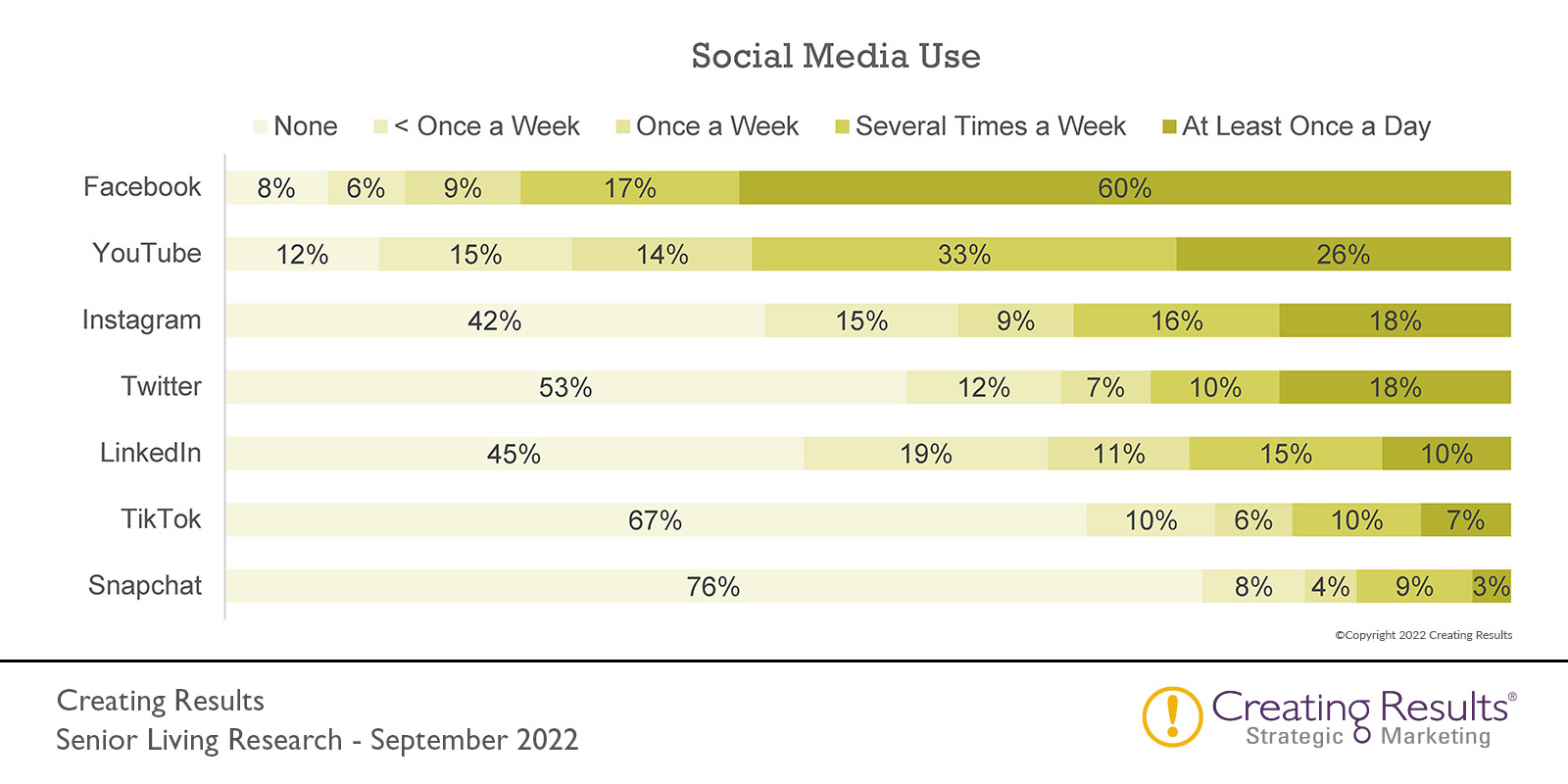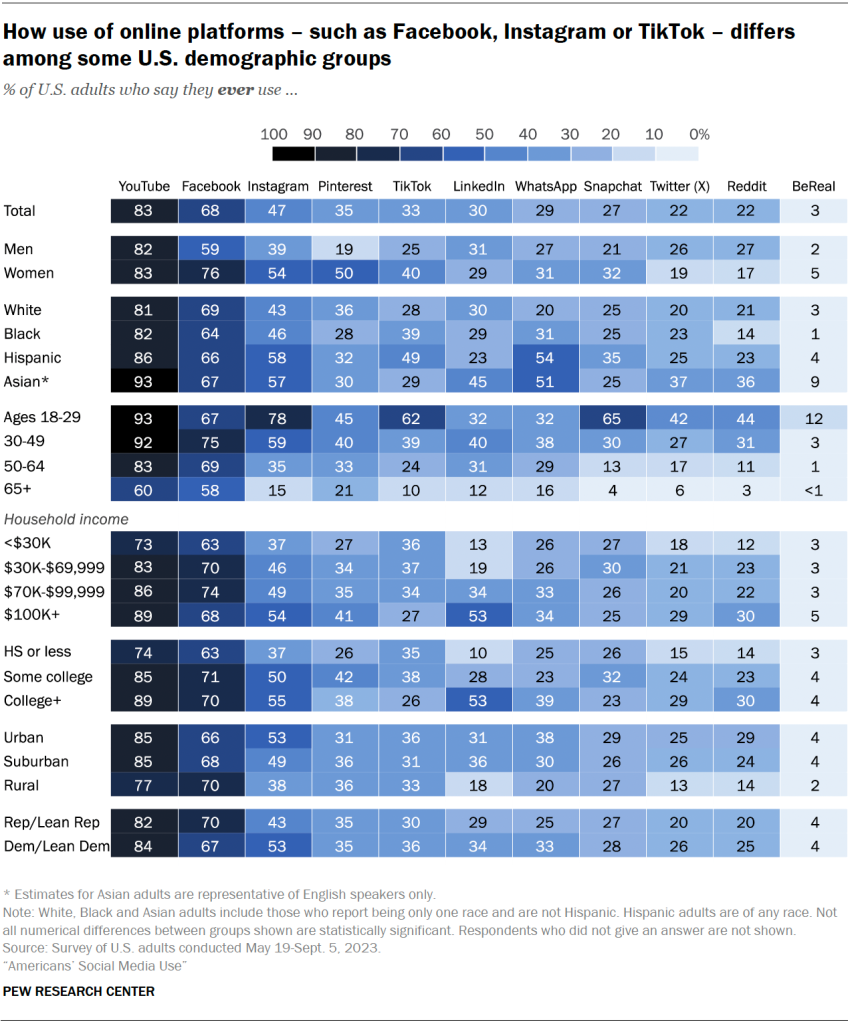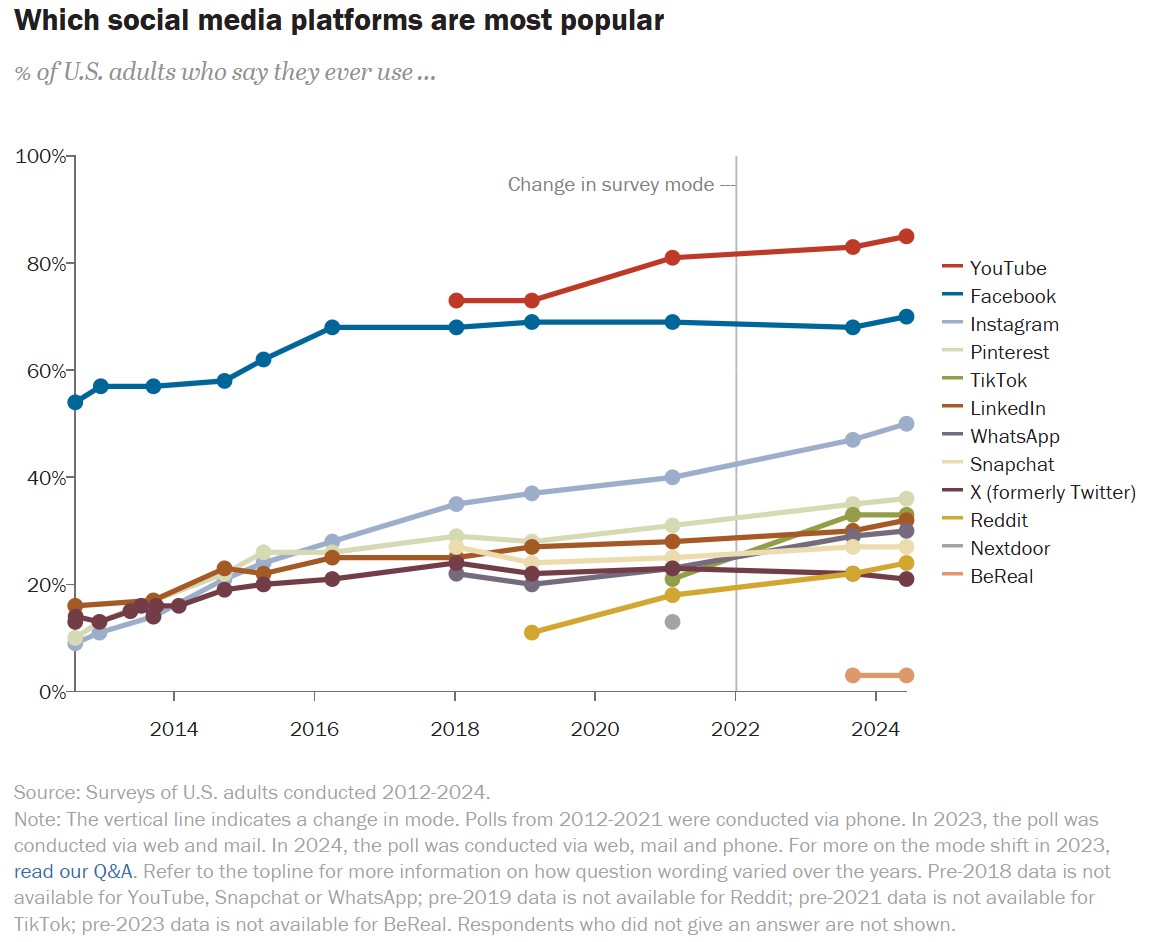In recent years, YouTube has become one of the most popular and widely used video streaming services. With more than two billion users monthly, people are increasingly turning to YouTube for entertainment and information. But what may come as a surprise is that, according to Creating Results’ research, 88% of those ages 55 and over are using YouTube on a weekly basis! This statistic shows that YouTube and seniors frequently coexist.
Why? It might be because YouTube provides an easy and convenient way for seniors to stay connected with their loved ones, watch educational videos and keep up with the news. Seniors no longer need to be tech-savvy to use YouTube, as the platform is designed to be easily navigable.

Facebook is the most popular social media for mature customers. YouTube is also popular, with most customers using it at least several times a week.
YouTube and Seniors: Education and entertainment
Over the years, we’ve seen seniors becoming more tech-savvy and more active in their use of digital media platforms. While Facebook has often dominated the conversation, YouTube is actually the most used social media platform across age groups, with 85% of all Americans reporting they use the video-sharing site, according to Pew Research Center. And while Facebook usage has largely plateaued since 2016, YouTube’s usage has continued to increase, becoming a great source of entertainment and education for seniors, helping them stay engaged in their communities.
In addition, YouTube provides an invaluable way for seniors to connect with others who share their interests. The platform makes it easy to find people with similar interests and hobbies and enables seniors to stay updated with news and current events.
Best ways to market to seniors on YouTube
Particularly relevant for businesses and brands, YouTube’s audience also represents an attractive advertising segment. Those who are college educated and have $100k+ in annual income use YouTube more than any other platform, highlighting the importance of marketing to seniors on YouTube. As more and more seniors are turning to YouTube for entertainment and information, companies can reach this demographic effectively to market products and services.

Here are three steps to take to market on YouTube to seniors:
- Ensure your content is relevant and tailored to the senior demographic. Seniors have different interests and preferences than younger generations, so it’s important to tailor your content to them.
- Use age-appropriate language. Seniors may not understand certain slang or terminology that younger generations use, so choose age-appropriate language.
- Offer helpful content. Seniors are looking for content that’s helpful and informative, so provide them with useful information.
By taking these steps, you can ensure that your content is tailored to seniors and provides a positive experience on YouTube. With more seniors turning to YouTube for entertainment and information, it’s essential for businesses and brands to ensure they’re reaching this audience.
“I am an older adult and it seems many technologies are created for younger folks who have grown up with using technology. As a result, there seems to be an assumed understanding of things as simple as knowing the symbol for on and off buttons, or the symbol to end or repeat a function.”
Additionally, in an AARP survey, many 50+ adults pointed out ways that technology is geared toward younger generations who inherently understand the meaning of specific symbols and buttons. They prefer that someone show them how to use the technology, rather than teaching themselves, which presents an opportunity for businesses to offer in-person or virtual events for older adults.




